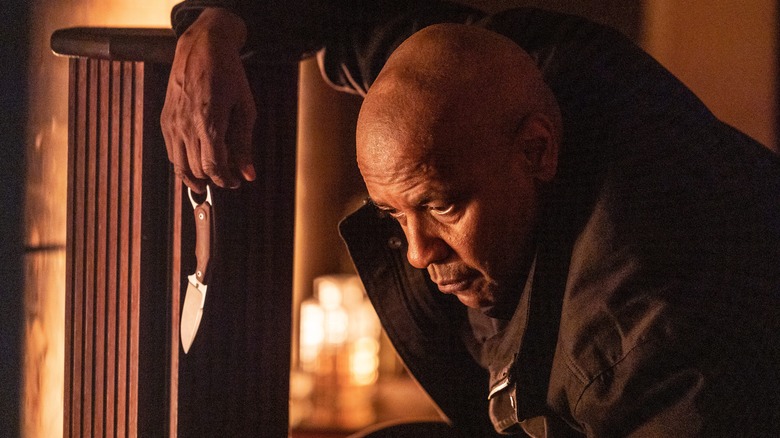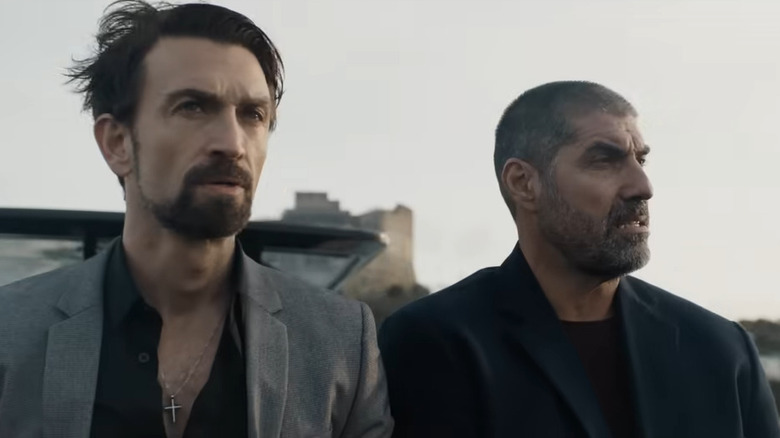One Scene In The Equalizer 3 Provided The VFX Crew With A Big Challenge
Spoilers for "The Equalizer 3" follow.
Antoine Fuqua's new film "The Equalizer 3" takes place in a placid, seaside Italian village where the vicious vigilante Robert McCall (Denzel Washington) has come to rest. Well, more specifically, McCall is there to recover from a bullet wound after having infiltrated a gangster's Italian lair and murdered him and about a hundred of his thugs. While he recovers, McCall finds that he likes the town's quaint storefronts and friendly locals, eventually realizing that he'd like to retire to this place as soon as possible. Before that can happen, though, he first has to murder several hundred more mafiosi who aim to bully the hamlet's shopowners from their buildings, tear the town down, and build garish casinos in its place.
One evening while enjoying a dinner out, McCall witnesses a tattooed, gun-toting fratboy criminal shake down the only good cop in town (Eugenio Mastrandrea) right in front of an entire restaurant. McCall, in response, seizes the criminal and tortures him on the spot (he squeezes a pressure point in the villain's hand). Immediately after dinner, McCall stalks the villain and his retinue back to their car where he swiftly runs one of them over in a van. What follows is a scene of ghoulish slaughter, the bad guys getting their comeuppance.
The shot of the thug being run over by a van couldn't have been timed better if it were in a Zucker Brothers comedy. The camera sits in a car, looking out through the window, when the van speeds by and erases a gangster from existence. It's unexpected, shocking, and weirdly cathartic.
The shot was choreographed by the film's VFX Coordinator Erick Alcaraz, who recently spoke with The Hollywood Handle on the difficulties of making it. It's not easy, staging a van crash.
The van crash
It was a real van that had to enter the frame just as one of the actors delivered a line of dialogue. It then had to slam into a wall, crushing the bad guy. There had to be several edits during the swift sequence, to allow for clarity. Where is the van in relation to the wall? How close was it to the car? Blocking was crucial, and a lot of coverage was required. To add in the actors and stunt performers, there was some compositing via a blue screen. Then came an extended editing process to ensure visual clarity. Alcatraz said:
"[T]here's this scene about the car crash that you can see in the trailer for a second. That was really complicated because we needed to shoot so many separate elements so we could blend them together afterwards in post-production. That was really hard, to get the speed of the van right so the van could crash at this specific moment. Then, you need to gather all these different little pieces and then recreate that on a set, on a blue screen. I think that was the most challenging one to film."
It worked. The scene will likely elicit a sardonic laugh from the audience, pleased to see such a slimy character get dispatched in such a dramatic fashion. The van scene also served as a turning point in "The Equalizer 3," as it was McCall's open declaration of war against the Sicilian mafia. Only more mayhem followed.
The flick is simple, but the action is excitingly violent. We have Alcatraz to thank for a lot of it.

